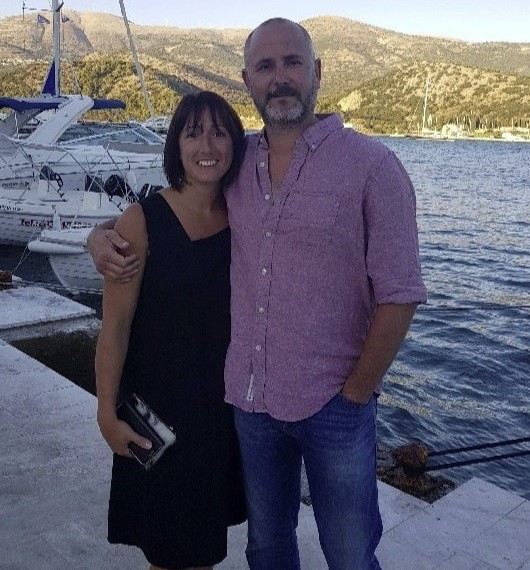Roof flashing is added to sections of a building’s roof that are vulnerable to flooding. Part of your annual roof check should include making sure that your flashing has not corroded and sits flat against applications. In this blog we will detail how long roof flashings last.
So, how long do roof flashings last? Aluminium roof flashing typically lasts 15-20 years with measures taken against potential damage, including using compatible materials from the beginning of the process, and regular maintenance.
Read on to learn how flashing is an essential investment for your roof and our installation guide.
How Long Will Aluminium Roof Flashing Last?
Aluminium flashing has a predicted life span of 15-20 years and should be checked annually against corrosion and other damage, especially if there have been significant adverse weather events. As only metals that contain iron will rust, aluminium is safe from such destruction with its natural rust-resistant quality.
If you are concerned about the environment, this naturally occurring metal is permanently available and saves up to 95% dangerous emissions each time it’s recycled. Aluminium provides a budget friendly appeal with its low costing. Its flexibility allows for an easy to work with material. The only real downside is that it isn’t compatible with some materials, but this can be avoided by being knowledgeable and planning in advance to avoid corrosion.
What is Roof Flashing?
Roof Flashing is a metal part of a building’s roof that allows water to run away from walls, chimneys and roof valleys. Directing the flow of water away from openings, cracks or gaps, minimises the risk of flooding into your house.
Metal flashing can be tailored specifically to your house or project to match your preferred design. The materials used in different types of roof flashing include:
- Aluminium – A lightweight material that is easy to manipulate for building. The price is often cheaper than some of the more commonly used materials, while avoiding sacrificing durability.
- Lead – Lead is one of the most commonly used types of flashing due to possessing non-corrodible, durability and flexibility properties. However, it can be difficult to manipulate and towards the higher end of metal flashing prices.
- Copper – The durability of copper significantly increases the cost of the material. Although it works well with other materials, copper can become discoloured over time due to oxidation, often staining surrounding materials and ruining the appealing aesthetic of your roof.
- Stainless/galvanised steel – One of the more inexpensive material options if stainless or galvanised steel, however they lack the durability of the more expensive choices.
The material we recommend for roof flashing is the light-weight and rust-resistant choice of aluminium.
What Can Damage Roof Flashings?
Ensure you are aware of potential damaging factors to the material as combinations such as copper and aluminium can result in corrosion or etching. From exposure to oxygen within the air, metals can become tarnished, a thin layer of polish can prevent the chemical reaction from occuring. Check your roof annually for any damage or leakage caused by weather or general exposure to the environment. Fixing any minor problems before they worsen could save you from expensive repair costs further down the line.
Why Do You Need Roof Flashing?
Roof flashing directs water away from any areas that have the most potential for leakage. This essential step extends the lifespan of your roof and protects your home and belongings from water damage. It can also be fitted around other parts of your house such as windows, doors and even embedded into the walls to provide extra measures against water penetration.
How Do You Fit Roof Flashing?
To ensure your roof flashing is fitted correctly, you can hire a professional roofer or follow our step by step guide:
- Use a brush to remove any debris or dust surrounding the installation area.
- Before the flashing is fitted, it needs to be cut to the specific dimensions of your house. You can buy a roll, sheet or pre-made shapes for common house applications such as chimneys or vents. However, if you have a uniquely shaped roof, you should accurately measure each individual area to ensure that the flashing will fit flat. Cut the flashing to the correct size using tin snips. For bespoke roof flashing profiles to suit your project, get in touch with our team at Kladworx.
- Using a metal brake tool, bend the aluminium flashing so that half sits flat against the roof and the other half is flush against the wall where they meet.
- Hold the flashing flat against the wall and nail it to the wall using galvanised nails as close to the edge of the flashing as possible.
It is helpful to note that a roof renovation project won’t necessarily include a flashing replacement as flashing should outlive the other parts of the roof. Roofers will check the quality of the initial installation and make sure the flashing’s integrity holds up. To find out how to replace roof flashing yourself, read our recent blog.
Roof Flashing at Kladworx
At Kladworx, our experienced team curates quality aluminium flashing for your home, meaning you can be confident in the materials you use. We ensure that our bespoke profiles suit your project.
Get in touch with a member of our team to ensure your project receives the correct fit.

